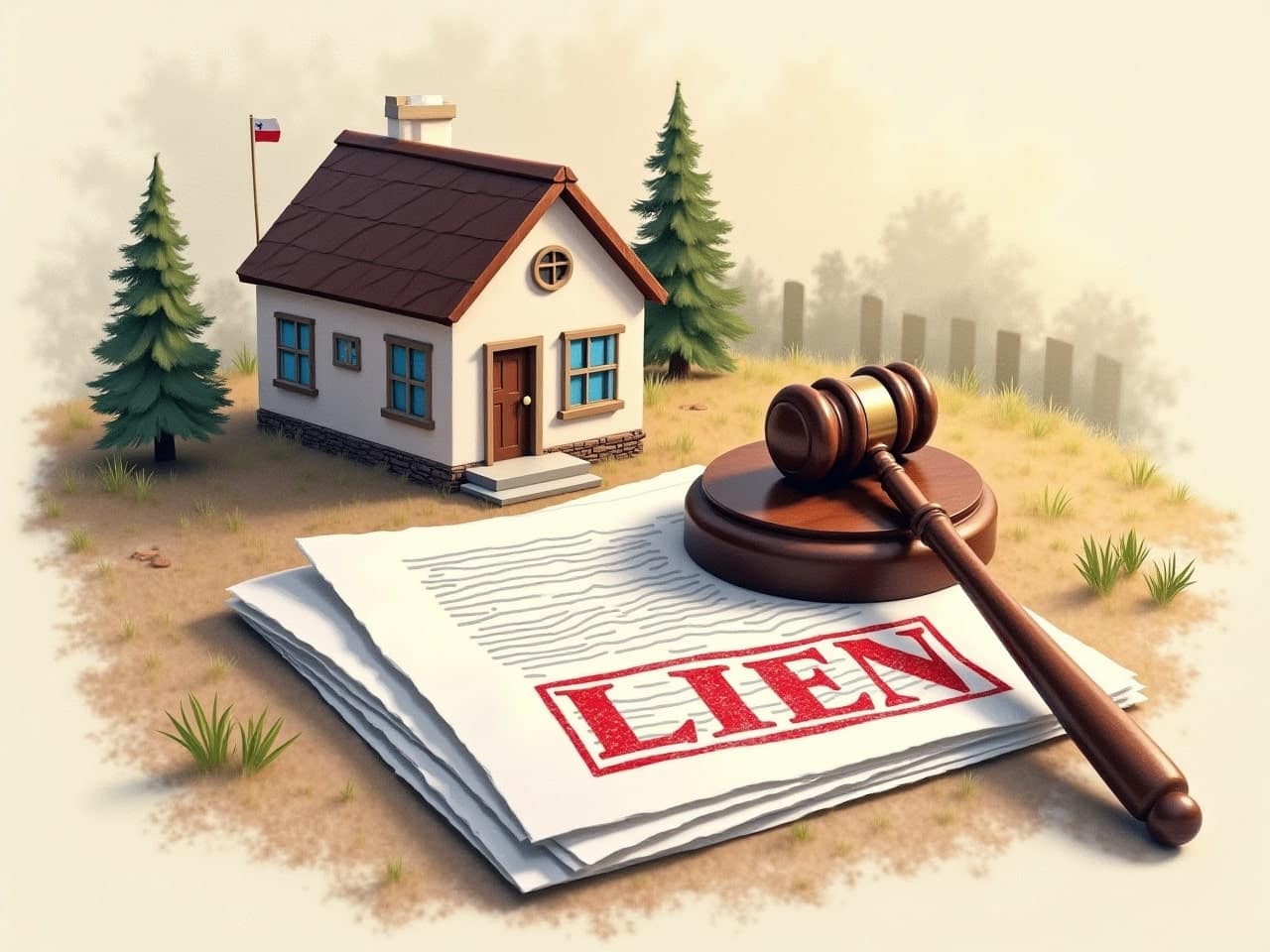Protecting Your Payment Rights in Construction
In the construction industry, getting paid for your hard work shouldn’t be complicated—but unfortunately, it often is. Whether you’re a subcontractor, material supplier, supplier, or service provider, you’ve likely experienced the frustration of delayed or disputed payments. This is where a pre-lien notice becomes your most valuable tool for protecting your right to payment.
A pre-lien notice (sometimes called a preliminary notice or notice to owner) is a formal legal document that informs property owners and general contractors that you’re working on their project and expect to be paid for your services or materials. This legal document protects your payment rights by ensuring all parties are aware of your involvement.
Think of it as laying the groundwork for your payment protection. By sending this notice early in the project, you preserve your right to file a mechanic’s lien later if payment issues arise. Without this crucial first step, you might forfeit your lien rights entirely in many states, including Texas.
Understanding Preliminary Notice: Your First Line of Defense
Before diving into template specifics, let’s clarify what exactly a pre-lien notice, also known as a construction notice, is and why it matters so much to your business’s financial health.
A pre-lien notice template is a standardized document format that helps contractors and suppliers formally notify property owners and general contractors about their involvement in a construction project. This notice doesn’t place a lien on the property—instead, it preserves your right to file a lien later if necessary. This protective measure keeps your options open while also professionally communicating your expectation of payment.
Many contractors hesitate to send these notices because they worry about damaging client relationships. However, professional pre-lien notices are increasingly viewed as standard business practice in the construction industry. Rather than signaling distrust, they demonstrate your professionalism and knowledge of proper business procedures. In fact, regular use of these notices can actually improve communication and reduce payment problems before they escalate.
When to Send a Pre-Lien Notice: Timing Matters
Knowing exactly when to send your pre-lien notice can make or break your payment protection strategy. Adhering to the payment deadline is crucial to protect your lien rights, as missing these critical deadlines by even a single day can completely invalidate your lien rights—it’s that serious!
In Texas, the deadlines follow a specific pattern that depends on both your role in the project and whether you’re working on a commercial or residential property. Let’s break this down into simple terms:
For original (general) contractors working directly with the property owner, there’s actually good news—you don’t need to send pre-lien notices at all! Your lien rights are preserved without this step. You’ll only need to file your lien affidavit within 4 months after completion for commercial projects, or within 3 months for residential projects.
For subcontractors (1st tier) on commercial projects, you’ll need to follow a three-step timeline:
- Send your invoice by the 15th day of the second month following when the work was performed
- Send your pre-lien notice by the 15th day of the third month following the work
- File your lien affidavit by the 15th day of the fourth month following the work
Sub-subcontractors (2nd tier) on commercial projects follow that same timeline as 1st tier subcontractors.
For residential projects, the timeline moves faster. Subcontractors must send pre-lien notices by the 15th of the second month following the work, and file their lien affidavit by the 15th of the third month.
Here’s a real-world example to make this clearer: If you’re a subcontractor who performed work in March on a commercial building, you’d need to send your invoice by May 15th, your pre-lien notice by June 15th, and file your lien affidavit by July 15th. If any of these dates fall on a weekend or holiday, you get until the next business day.
Remember that these deadlines are based on when you actually performed the work or supplied materials—not when you sent the invoice. This is a common mistake that can cost you your lien rights. For instance, if you completed a three-month project from January through March but only invoiced in April, you’d still need to track the deadline for January’s work separately from February’s and March’s work.
Keeping track of all these dates might seem overwhelming, especially when you’re juggling multiple projects. That’s why many contractors implement systematic tracking systems or use specialized lien filing services to ensure they never miss these critical deadlines.
Other states have their own specific requirements that may differ significantly from Texas. In California, preliminary notices must typically be sent within 20 days of first furnishing labor or materials, while Florida allows up to 45 days. Given these variations, it’s essential to know the specific requirements for each state where you operate.
These notices aren’t just legal hoops to jump through—they’re practical tools that establish clear communication about payment expectations early in the project, setting the stage for smoother financial transactions throughout the construction process.
Essential Components of an Effective Pre-Lien Notice Template
Creating an effective pre-lien notice sample requires attention to specific details that fulfill legal requirements while clearly communicating your payment expectations. A properly formatted notice typically includes several key elements that protect your rights.
First, your notice should clearly identify all parties involved in the project. This includes your company’s information (name, address, contact details, license number if applicable), the property owner’s details, the general contractor’s information, and any other relevant parties in the payment chain. This comprehensive identification ensures there’s no confusion about who is being notified and why.
The notice must also include specific project information, such as:
- The property address and legal description (when available)
- The type of labor, services, or materials you’re providing
- The name of the person who hired you
- The approximate value of your contribution to the project
- The first and last dates of your work or material delivery
Additionally, your notice should include clear language about your intent to secure lien rights if necessary. Many states require specific statutory language or disclaimers to be included verbatim. These statements inform the recipient about the purpose of the notice and potential consequences if payment isn’t made according to contract terms.
Remember that while templates provide a good starting point, each notice should be customized to your specific project details and the requirements of your state. A generic notice that doesn’t meet your state’s requirements could be deemed invalid if you later need to enforce your lien rights.
State-Specific Requirements: Tailoring Your Template
Because mechanic’s lien laws vary significantly by state, your pre-lien notice template must be tailored to meet specific jurisdictional requirements. What works in one state might be completely inadequate in another.
In Texas, the statutory language is particularly important. Texas pre-lien notices (called “monthly notices”) must include specific warning language to properly preserve lien rights. The notice must also specify which months’ work remains unpaid and be sent via certified mail with return receipt requested (or other trackable method). Without these specific elements, Texas contractors may lose their lien rights regardless of the validity of their payment claim.
Other states have their own unique requirements:
- Arizona requires preliminary notices to be sent within 20 days and notarized
- California requires notices to include an estimate of the total price of work to be provided
- Florida has different notice requirements for private and public projects
- Georgia requires notices to be sent to the property owner, contractor, and sometimes the project lender
This variation means that multi-state contractors must maintain different templates for each state where they operate. While this might seem cumbersome, it’s far less troublesome than discovering your lien rights have been compromised after payment problems arise.
Delivery Methods: Ensuring Your Notice Is Legally Received
Even the most perfectly crafted pre-lien notice becomes ineffective if you can’t prove it was properly delivered. The delivery method is a critical aspect of the notice process that directly impacts the validity of your lien rights under Texas law.
Accurate property records are essential for ensuring proper delivery of notices.
Notices must be delivered using one of these specific methods:
- In person to the party entitled to the notice or to that party’s agent
- By certified mail
- By any other form of traceable, private delivery or mailing service that can confirm proof of receipt
When using certified mail in Texas, the statute specifically states that deposit or mailing of the notice in the United States mail in the required form constitutes compliance with the notice requirement. This is important because it means the effectiveness of your notice dates from when you properly mail it, not when it’s received. However, this provision does not apply in situations where the law explicitly requires receipt of the notice by the person to whom it is directed.
There’s also a practical safeguard in the law: if a written notice is actually received by the person entitled to receive it, the specific method of delivery becomes immaterial. This means that while following the prescribed methods is always safest, what ultimately matters is that the notice reached its intended recipient.
For maximum protection, most construction professionals in Texas opt for certified mail with return receipt requested. This method provides clear evidence of both sending and delivery, which can be invaluable if payment disputes arise later. Some contractors even take additional precautions by sending duplicate notices through multiple delivery methods to ensure receipt.
It’s essential to keep detailed records of:
- When each notice was prepared
- The exact contents of each notice
- When and how it was sent
- Proof of delivery (return receipts, tracking information)
- Any responses received
These records become invaluable if payment disputes arise and you need to demonstrate your compliance with notice requirements. Consider implementing a tracking system or using specialized mechanic’s lien filing software to manage your notice process, especially if you juggle multiple projects simultaneously.
Pre-Lien Notice Templates: Free vs. Professional Options
When searching for a pre-lien notice sample, you’ll find many free templates and preliminary notice forms online. While these can provide a basic starting point, they come with significant limitations and potential risks.
Free templates often present several problems. They may be outdated and not reflect current laws in your state. They might be overly generic, missing state-specific requirements that could invalidate your notice. They rarely include guidance on proper completion or delivery methods. And perhaps most importantly, they typically don’t adapt to the continuous changes in lien laws across different states.
Professional pre-lien notice services offer several advantages over free templates:
- State-specific forms that comply with current laws
- Regular updates when legal requirements change
- Guidance on proper completion
- Reminders about critical deadlines
- Professional delivery that meets legal requirements
- Documentation and tracking of sent notices
- Integration with your project management systems
While professional services do involve costs, these expenses are minimal compared to the potential lost revenue from forfeited lien rights. Consider it an insurance policy that protects your payment rights and demonstrates your professionalism to clients and contractors.
Many contractors find that implementing a systematic approach to pre-lien notices actually improves their cash flow and client relationships. By establishing clear expectations from the beginning, you reduce misunderstandings and payment disputes while preserving your legal remedies if problems do arise.
Incorporating Pre-Lien Notices Into Your Business Processes
To maximize the effectiveness of your pre-lien notice template, you need to integrate notice procedures into your standard business operations. This systematic approach ensures you never miss critical deadlines that could compromise your payment rights.
Start by establishing a standardized intake process for new projects. As soon as you secure a new job, collect all the information you’ll need for potential notices, including:
- Complete project address and legal description when available
- Property owner’s name and contact information
- General contractor’s details
- Construction lender information (if applicable)
- Project start date and estimated completion timeline
- Contract amount and payment terms
Next, create a calendar system that tracks notice deadlines for each active project. Many contractors use project management software or specialized lien rights management tools to automate these reminders. Set multiple alerts before critical deadlines to ensure you have adequate time to prepare and send notices.
Train your administrative staff about the importance of these notices and the consequences of missed deadlines. Make sure multiple team members understand the process so that notices don’t fall through the cracks during vacations or staff changes.
Finally, consider establishing a policy of sending preliminary notices on all eligible projects, regardless of whether you anticipate payment problems. This consistent approach eliminates guesswork, ensures you’re always protected, and positions these notices as standard procedure rather than signals of distrust.
Digital Tools and Software for Managing Pre-Lien Notices
In today’s digital environment, managing your lien rights doesn’t have to be a manual paper chase. Modern software solutions can streamline the entire pre-lien notice process, helping you maintain compliance while reducing administrative burden.
Digital tools can also help manage mechanics liens, ensuring that all legal requirements are met and reducing the risk of disputes.
For contractors in Texas looking to simplify the lien process, specialized platforms offer comprehensive solutions that remove the guesswork and tedious paperwork. The best solutions provide a streamlined, user-friendly approach to creating and sending pre-lien notices with just a few simple steps.
the best lien management platforms should provide:
- Simple, guided questionnaires that collect all necessary project information
- State-specific forms that comply with Texas Property Code requirements
- Automatic document preparation based on your project details
- Electronic document review and approval systems before payment
- Secure online payment processing
- Professional delivery services that meet legal requirements
- Tracking and confirmation of notice delivery
- Online dashboards to monitor status of all your notices
What truly sets the best pre-lien notice and mechanic’s lien services apart is their ability to handle the entire process for you—from document preparation to professional delivery. With the right platform, you can prepare your pre-lien notice online in about 15 minutes, then have the service handle the delivery via certified mail to all required parties, all while providing you with tracking information and delivery confirmation.
Some platforms also offer free access to statewide property databases for accurate information and legal descriptions. This feature alone can save hours of research time and help prevent errors that might invalidate your notice.
For contractors managing multiple projects, the ability to access all your documents from a secure online dashboard is invaluable. The best systems allow you to download, print, and track your notices from one central location, with 24/7 availability from any computer or mobile device.
By utilizing these specialized digital tools, contractors can transform what was once a confusing legal process into a simple, routine business practice that protects their payment rights while allowing them to focus on what they do best—their construction work.
Securing Your Construction Business with Proper Documentation
Throughout this guide, we’ve explored how a properly executed pre-lien notice template serves as a foundational element of payment security in the construction industry. These notices aren’t just legal formalities—they’re practical business tools that protect your rights, improve communication, and often prevent payment problems before they begin.
Remember that in construction, proper documentation isn’t just about complying with legal requirements—it’s about setting clear expectations, demonstrating professionalism, and ensuring you get paid for your valuable work. By implementing the strategies outlined in this guide, you’re taking a proactive step toward securing your business’s financial future.
For contractors looking to streamline this process, Texas Easy Lien offers comprehensive solutions that take the guesswork out of preliminary notices. Our user-friendly online platform allows you to prepare pre-lien notices in just 15 minutes. With access to statewide property databases for accurate information, a secure online dashboard to track all your documents, and bilingual support in English and Spanish, Texas Easy Lien ensures your payment rights are protected with minimal effort on your part. Contact us today to protect your work and ensure you get paid.


